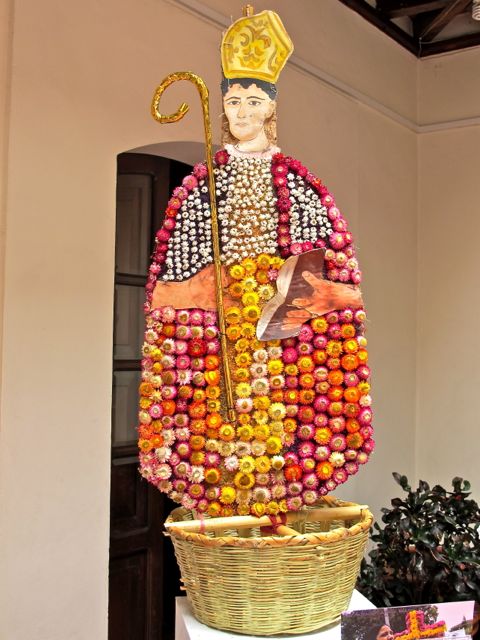Next Monday, the the 83rd annual modern Guelaguetza will commence on Cerro Fortín. And so, the last of my photos from last year’s evening performance…
I’ll resume my coverage with the San Paliluú of San Antonio Huitepec a village from the Valles Centrales region.


 San Pedro Comitancillo performed the Danzas y Sones de Mi Tierra from the Istmo de Tehuantepec region.
San Pedro Comitancillo performed the Danzas y Sones de Mi Tierra from the Istmo de Tehuantepec region.



 And then there was the Danza de la Pluma. Moctezuma, Danzantes, Malinche, and Doña Marina from San Jerónimo Tlacochahuaya, in the Valles Centrales region, performed one of the dances that reenacts the story of the Conquest.
And then there was the Danza de la Pluma. Moctezuma, Danzantes, Malinche, and Doña Marina from San Jerónimo Tlacochahuaya, in the Valles Centrales region, performed one of the dances that reenacts the story of the Conquest.


 Loma Bonita in the Tuxtepec region, very near the the state of Veracruz, then took the stage with its rousing Rinconcito Oaxaqueño.
Loma Bonita in the Tuxtepec region, very near the the state of Veracruz, then took the stage with its rousing Rinconcito Oaxaqueño.


 The sun began to set as 36 beautiful women from San Juan Bautista Tuxtepec in the Papaloapam region, wearing their with brightly colored huipiles, took to the stage for the crowd pleasing Flor de Piña.
The sun began to set as 36 beautiful women from San Juan Bautista Tuxtepec in the Papaloapam region, wearing their with brightly colored huipiles, took to the stage for the crowd pleasing Flor de Piña.
Darkness began to fall (making for challenging photography from 1/3rd of the way up from the Guelaguetza Auditorium stage), as the lively Sones and Chilenos danced by the delagation from the Costa region village of San Juan Cacahuatepec kept the energy flowing.
 La Dote y el Tercel Día e Fandango from the dancers of San Antonino Castillo Velasco in the Valles Centrales region closed the evening’s performances.
La Dote y el Tercel Día e Fandango from the dancers of San Antonino Castillo Velasco in the Valles Centrales region closed the evening’s performances.
 As fireworks exploded over the Guelaguetza Auditorium, the band played, the audience took to its feet, and delegations reclaimed the stage to dance the evening’s Guelaguetza performance to a close.
As fireworks exploded over the Guelaguetza Auditorium, the band played, the audience took to its feet, and delegations reclaimed the stage to dance the evening’s Guelaguetza performance to a close.
Now on to La Guelaguetza 2015!










 Mexican Peso Converter
Mexican Peso Converter